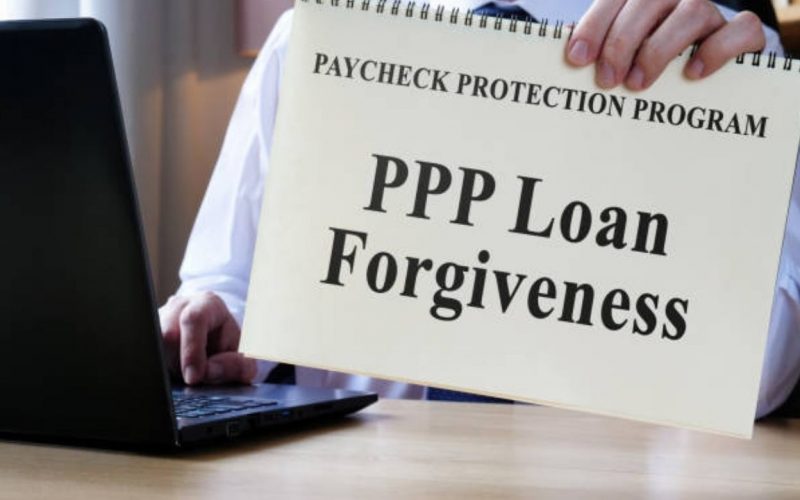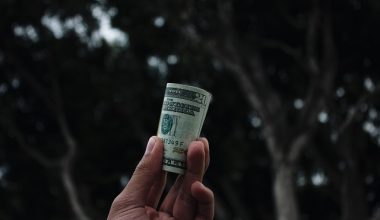Self-employed individuals such as freelancers, independent contractors, and sole proprietors who took out a PPP loan are guaranteed to have their loan forgiven under the PPP loan forgiveness for self-employed if they qualify under the terms of the Paycheck Protection Program Flexibility Act, which was signed into law in June.
To be eligible for forgiveness, your company must have suffered losses as a result of the pandemic.
If you operate a business without employees, you must certify that the business could not operate at the same level of business activity it had been operating at from February 15, 2020, until the end of the loan period because it was complying with work or customer safety requirements related to COVID-19.
Here is how to get loan forgiveness PPP for self-employed workers.
What is PPP loan?
The Paycheck Protection Program (PPP) is a $953 billion business loan program established by the US federal government in 2020 under the Coronavirus Aid, Relief, and Economic Security Act (CARES Act) to assist certain businesses, self-employed workers, self-employed people, nonprofit organizations, and tribal businesses in continuing to pay their employees.
The Paycheck Protection Program enables businesses to qualify for low-cost private loans to cover payroll and other expenses. The loan amount is roughly 2.5 times the applicant’s average monthly payroll costs.
A second draw, usually equal to the first, may be given to an applicant in some instances. If the company maintains its personnel account and wages, the debt may be partially or entirely repaid. The Small Business Administration of the United States is in charge of implementing the program.
Approved uses for your PPP loan
The Small Business Administration (SBA) outlines a list of uses that are eligible for forgiveness.
Payroll – Compensation for employees, which includes:
- Annual salary or wages
- Cash compensation
- Employee local and state taxes
- Allowances for dismissal
- Healthcare
- Retirement benefits
Approved Business Costs -Non-payroll fees and expenses, such as company rent, utilities, mortgage interest payments, and interest payments on other eligible debt obligations, can all be covered by the money. Before February 15, 2020, the commitments have to be in place.
Applying for PPP Loan Forgiveness
Self-employed individuals who got a PPP loan may ask to have their loan forgiven at any time on or before the loan’s maturity date if they have spent all of the PPP loan proceeds from the loan for which forgiveness is sought in accordance with PPP loan forgiveness rules for self-employed, according to the SBA’s interim final guidelines published in June. Those granted before that date will expire in two years unless the lender and the borrower agree to extend the loan tenure.
Despite the fact that you can apply for forgiveness at any moment before the loan expires, you must start paying on your loan 10 months after the covered period ends.
Although most borrowers prefer to have their loan forgiven before having to make payments, you should apply for forgiveness before the grace period expires. Borrowers can even request forgiveness if they have already spent the loaned monies during the covered time.
Self-employed PPP Loan Forgiveness Aapplication
Here are a few tips to keep in mind as you apply for self-employed PPP loan forgiveness :
- Choose the right form for your business.
- Review how you spent your funds.
- Check your covered period.
- Gather your documentation.
- Follow your lender’s instructions
- Hold onto your backup documents.
#1. Choose the right form for your business
There are three options:
- Form 3508S, a simplified application for debtors with loans of less than $150,000.
- Form 3508EZ is for borrowers with any size loan who attest that they meet SBA eligibility criteria for yearly salary or hourly wage reductions and did not lower full-time equivalents (FTEs) or were unable to operate owing to government constraints.
Familiarize yourself with each choice and select the one that best fits your company’s operations throughout the time period under consideration.
#2. Review how you spent your funds
The SBA has strict standards for spending PPP monies in order to qualify for forgiveness. The total amount of loan proceeds used for qualified payroll and nonpayroll costs paid or incurred during the borrower’s covered period will determine the actual loan forgiveness amount. Nonpayroll expenditures cannot account for more than 40% of the total forgiveness.
#3. Check your covered period
The covered period begins when the borrower receives the loan money for the first time. It comes to an end on a date chosen by the borrower that is at least eight weeks but not more than 24 weeks after the loan profits are received.
#4. Gather your documentation
Your lender and the loan forgiveness form you pick will determine what information you’ll need to complete your loan forgiveness application. Everyone who applies must have proof of qualified payroll and nonpayroll expenses on hand.
#5. Follow your lender’s instructions
While the SBA provides PDF versions of debt forgiveness application forms, your lender may have created a digital version. Because each PPP lender handles the procedure differently, you’ll want to follow your lender’s instructions.
#6. Hold onto your backup documents
Even if your PPP loan is entirely forgiven, the SBA has documentation preservation requirements that differ from every PPP loan forgiveness application. Visit their website to learn more about PPP loan forgiveness for the self-employed.
Requirement For PPP Loan Forgiveness For Self-employed
You must spend 60% of the PPP loan proceeds on qualified payroll costs throughout the covered period to have your Paycheck Protection Program (PPP) loan forgiven in full by the Small Business Administration (SBA). In order to estimate your maximum debt forgiveness amount, you must also compute the amount you paid on payroll expenditures.
Eligible Payroll Costs for For PPP Loan Forgiveness For Self-employed
To calculate your eligible payroll costs incurred or paid during the covered period, you’ll add together the amount you spent on Cash Compensation, Employee Benefits, and Owner Compensation, as follows.
Cash Compensation:
- Include gross income, gross wages, gross tips, gross commissions, paid leave (vacation, family, medical, or sick leave, but not leave covered by the Families First Coronavirus Response Act), and allowances for dismissal or separation paid or incurred during the Covered Period.
- Do not include Qualified salaries used to calculate the Employer Retention Credit4 or the disaster credit5. The total amount of cash compensation eligible for forgiveness for each employee cannot exceed $100,000 per year, prorated for the Covered Period.
Employee Benefits
The total amount paid by your business for:
- Employer contributions to employee group health, life, disability, vision, or dental insurance, including employer payments to a self-insured, employer-sponsored group health plan, but excludes employee pre-tax or after-tax contributions
- Contributions to employee retirement plans, omitting employee payments (pre-tax or after-tax).
Owner Compensation
- Any payments you paid to owners, including owner-employees (with a 5 percent or greater ownership stake), a self-employed individual, or general partners, are subject to the limitations outlined below.
- This amount is limited to the lower of (a) $20,833 or (b) the 2.5 month equivalent of your business’s gross income in the year used to compute your PPP loan for each individual owner across all enterprises.
- Owner compensation includes proprietor expenses if you submitted for PPP using Form 2483-C or 2483-SD-C (for Schedule C filers utilizing gross income instead of net profit) (the difference between gross income and employee payroll costs).
- The lower of $20,833 or the 2.5 month equivalent of your business’s gross income in the year used to compute your PPP loan applies to proprietor expenditures.
How are PPP Loan Amounts Set for the Self-Employed?
The amount of a PPP loan that a company with employees is qualified for is usually computed based on the average payroll expenses of qualifying companies. Due to the fact that most self-employed people do not have workers, the US Treasury Department and the Small Business Administration established “owner compensation replacement” to allow self-employed people to participate in the Paycheck Protection Program.
The PPP loan amount for self-employed people was based on their 2019 monthly average net profit, which is derived by dividing their net profit for the year by 12. If you’re self-employed, your net earnings should be recorded on Schedule C of your Form 1040.
Read Also: How to Apply for Best Business Loans in 2023/Step-By-Step Guide
The amount of your PPP loan will be 2.5 times your average monthly net profit in 2019, which will cover around 10 weeks. This strategy allows you to borrow up to $20,833 across all of your businesses.
If you got your PPP loan before June 5, 2020, you could choose an eight-week covered period, in which the loan amount was based on eight weeks of your net earnings for 2019. The maximum amount for loans with a covered duration of eight weeks was $15,385.
Sole Proprietor PPP Loan Forgiveness Rules 2023
You’re probably aware of the PPP loan forgiveness rules for self-employed if you applied for a PPP loan. However, because the PPP Flexibility Act has updated those words, it’s worth going over them again.
Self-employed workers must fulfil these rules in order to earn complete forgiveness for their PPP loan:
- At least 60% of your loan must be use to cover “payroll costs,” which for self-employed workers is basacally their salaries which include wages, commission, and tips, up to $100,000 on an annualized basis.
- Use 40% or less of your loan on the remaining eligible expenses: rent, utilities, and/or mortgage interest.
- Use your loan within 24 weeks of receiving the proceeds in your bank account—known as your “covered period.”
Self-employed workers are exempt from other PPP forgiveness rules, such as not reducing headcount or income.
Keep in mind that, as of this writing, expenses like health insurance premiums and retirement benefits are not eligible for forgiving costs for self-employed workers, even if they fall under “payroll.”
PPP Loan Forgiveness For Self-employed Farmers
As a farmer, you can apply for PPP Loan forgiveness for farmers using the SBA’s Direct Forgiveness Portal (as long as your lender has opted in). Most of your loan information will self-populate on the form once you fill out some basic information, and you’ll sign it using DocuSign.
Maximum Owner compensation For PPP Loan Forgiveness
You’ll add all of the sums together to find the total amount you spent on acceptable payroll expenditures once you’ve decided how much of your PPP loan you spent on cash compensation, employee perks, and owner compensations.
Second, compare your total payroll expenditures to the entire PPP loan amount you borrowed to see if payroll costs accounted for at least 60% of your total PPP money. To do so, divide your payroll expenditures by the amount of your PPP loan.
If your percentage is greater than or equal to 60%, you will be eligible for loan forgiveness up to the amount of your entire PPP loan (depending on how many total eligible expenses you submit).
What Are the Terms of Ppp Loan Forgiveness?
Use at least 60% of your loan to cover “payroll costs,” which are effectively salary (including wages, commissions, and gratuities) for self-employed individuals up to $100,000 on an annual basis.
How Do You Apply for PPP Loan Forgiveness as a Self-Employed Worker?
Self-employed people, like any other small firm that takes out a PPP loan, will return to their lender when the time comes for PPP loan forgiveness
What Happens if I Don’t Qualify for Full Loan Forgiveness?
Immediately repay your outstanding loan amount
What Documentation Do You Need to Get Ppp Loan Forgiveness?
For the owner’s compensation share, you would only need to provide your 2019 or 2020 Schedule C. If you are self-employed and have payroll expenses or other covered costs, you will need to prove these costs.
Conclusion
PPP loan forgiveness for self-employed is available for sole proprietorships who have taken out PPP loans. It’s vital to highlight that if a borrower receives a PPP loan, they must apply for loan forgiveness through their financial institution, otherwise, they will be responsible for repaying the amount.
PPP borrowers are eligible for forgiveness in an amount equal to the total of their qualified expenses throughout the course of their chosen Covered Period, which ranges from 8 to 24 weeks. Whether or not you have employees, you can still petition for forgiveness if you are a sole entrepreneur.
FAQs about PPP loan forgiveness for self-employed
What Happens If i Don’t Qualify for Full Loan Forgiveness?
Immediately repay your outstanding loan amount
What documentation do you need to get PPP loan forgiveness?
For the owner’s compensation share, you would only need to provide your 2019 or 2020 Schedule C. If you are self-employed and have payroll expenses or other covered costs, you will need to prove these costs.
- Payroll Report: Detailed Guide to Payroll Report
- ACCOUNTING PROGRAMS: Best Programs For Small Business, Updated!!! (Free & Paid)
- Public Liability Insurance For Self Employed: All You Need
- COVERED CALL OPTION: How To Use Covered Call Option Strategy Effectively (+ Detailed Guide)
- Business Expenses: List Of Business Expenses






